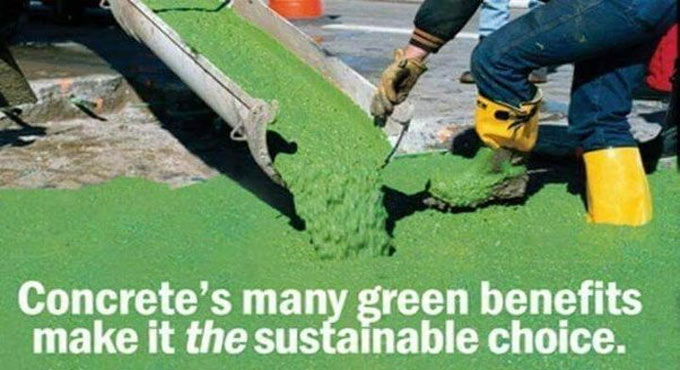
Green concrete is gaining popularity among construction industries
Green concrete is produced by utilizing eco-friendly materials in concrete to make it more eco-friendly.
Various industrial wastes or by-product materials like fly ash, quarry dust, marble powder/ granules, plastic waste and recycled concrete and masonry which are used in green concrete can minimize the intake of natural resource and energy and pollution of the atmosphere.
By recycling the industrial waste materials, harmful impact on environment, emission of CO2 as well as disposal issue of industries are greatly reduced. The resultant concrete mixture is examined and compared by performing compressive test and Split tensile test for 7days, 14days and 28days. In M25 concrete mix 50% of cement is substituted with fly ash and sand is completely substituted with 50% of quarry dust and 50% of marble powder.
Green concrete is very inexpensive since waste products are applied as a partial alternative for cement; the cost for disposing waste can also be avoided; energy consumption in production is lesser.
These waste materials are efficiently and cost-effectively employed to enhance some properties of fresh and hardened properties of mortar and concrete.
MATERIAL USED IN GREEN CONCRETE:
QUERY DUST: Quarry Dust belongs to a by-product from crushing process throughout quarrying activities and it is applied by substituting natural sand partly or entirely.
MARBLE POWDER: Marble waste powder stands for an industrial waste that comprises of heavy metals in constituent. Fineness with 90% of particles is passed through 300?m sieves. Marble powder is accumulated from the deposits of marble factories during shaping. It is kept on IS-150 micron sieve prior to be mixed in concrete.
WATER: Water is utilized for developing green concrete is drinkable and merely a tap water.
FLY ASH: If fly ash is used as an alternate of PCC, it will not only facilitate considerable savings in using up the cement and energy. Though, it is theoretically feasible to substitute 100% of Portland cement with fly ash, but replacement levels over 80% usually need a chemical activator. It is detected that the optimum replacement level is roughly 30%. Besides, fly ash can enhance specific properties of concrete as for example strength. As it produces less heat of hydration, it is very effective for mass concrete applications. The application of fly ash in concrete in best possible ratio can enhance the performance of concrete in both fresh and hardened state. Fly ash enhances the functionality of plastic concrete as well as the longevity of hardened concrete.
Normally, fly ash can minimize the mixing water requirement and make the paste flow behavior better.
Fly ash is not extremely reactive; the heat of hydration is minimized through substitution of part of cement with fly ash.
Compressive strength: The result of compression test with industrial waste comes as 50% replacement of cement at the dry curing age of 7 days, 14 days & 28 days.
Split tensile strength: Tensile strength of concrete varies from 10 to 18 % of the compressive strength. It is calculated with the direct tensile loading test. At the time of casting the cubes is mechanically vibrated on table vibrator. Since the use of direct tensile load to the test specimens is quite complicated, so, the tensile strength of concrete is normally calculated with the indirect tension test like splitting test. Tensile splitting strength tests of concrete block specimens are obtained at 28 days. Once the curing is completed, the specimens will be examined for Split Tensile Strength with a calibrated compression testing machine of 2,000 KN capacities. The loading rate on the cube is 10N/mm2 per min.


